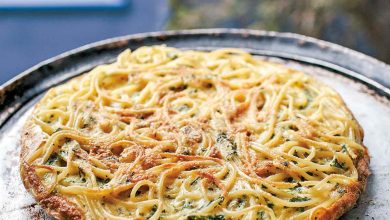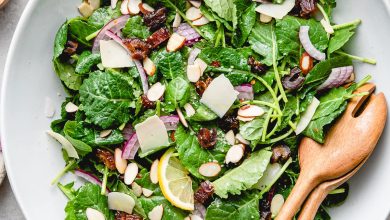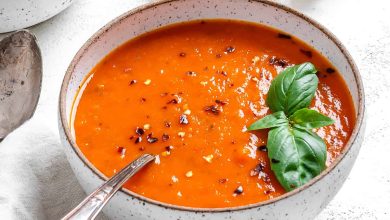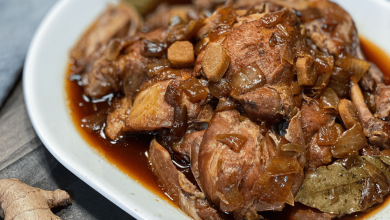An Arabic Breakfast
🍳☕️🥖🧀🥒🫒🍯🇦🇪 An Arabic Breakfast: A Delicious Journey 🇦🇪🍯🫒🥒🧀🥖☕️🍳
Ahlan wa Sahlan (Welcome) to the world of Arabic breakfast, a culinary delight that reflects the rich history and diverse cultures of the Arab world. 🌍🌅
History:
The tradition of Arabic breakfast dates back centuries and is deeply rooted in the Arab culture. It’s a hearty meal designed to fuel the body and mind for a day in the scorching desert sun. Over time, Arabic breakfast has evolved, influenced by various regions, from North Africa to the Levant, and the Arabian Peninsula.
Components:
- Bread (Khobz): Typically, Arabic bread such as pita or flatbread is a staple. It can be used for scooping up various dishes.
- Dairy (Labneh, Feta, or Cheese): Creamy labneh, feta cheese, or other local cheeses are common additions.
- Olives (Zaitoon): Green or black olives add a briny touch.
- Cucumbers and Tomatoes (Khayyar wa Banadoura): Sliced cucumbers and tomatoes provide freshness.
- Foul Mudammas: A popular dish made from fava beans, garlic, lemon, and olive oil.
- Hummus: Creamy chickpea dip seasoned with tahini, lemon, and garlic.
- Falafel: Deep-fried balls made from ground chickpeas or fava beans.
- Eggs (Bayd): Often prepared as scrambled eggs with herbs or poached eggs in a flavorful tomato sauce.
- Herbs (Naa’naa, Parsley, Cilantro): Fresh herbs are used for garnish.
- Tea or Coffee (Shay or Qahwa): Strong Arabic coffee or sweet mint tea is the preferred beverage.
Steps to Prepare:
- Bread Prep: Warm the Arabic bread in the oven or on a skillet until it’s slightly crispy.
- Dairy and Olives: Arrange labneh, feta cheese, and olives on a plate.
- Veggies: Slice cucumbers and tomatoes, and arrange them on a separate plate.
- Main Dishes: Heat foul mudammas, hummus, and falafel. For scrambled eggs, whisk eggs with herbs and cook in a pan.
- Herb Garnish: Chop fresh herbs finely.
- Tea or Coffee: Brew Arabic tea or coffee. For tea, steep fresh mint leaves with sugar. For coffee, use cardamom for flavor.
- Presentation: Arrange everything on the table in a colorful and inviting spread.
- Enjoy: Dive in, mix and match flavors, and savor every bite!
Time Needed:
The time required to prepare an Arabic breakfast can vary depending on your choices and the number of dishes you include. On average, it may take 30-45 minutes to prepare. However, some items like foul mudammas or falafel may require overnight soaking and preparation. So, it’s a good idea to plan ahead.
Arabic breakfast is not just a meal; it’s a social and cultural experience. It brings people together to share delicious food and create lasting memories. So, gather your loved ones, enjoy the flavors of the Arab world, and start your day with a hearty Arabic breakfast! 🌞🥖🧀🫒🍯☕️🍳🥒🇦🇪
Certainly! Here are the nutrition facts and health information for a typical Arabic breakfast:
Nutrition Facts (Approximate Values):
- Calories: A typical Arabic breakfast can range from 300 to 600 calories, depending on portion sizes and ingredients.
- Protein: Provides a moderate amount of protein, with eggs, dairy, and legumes contributing.
- Carbohydrates: Rich in carbohydrates due to bread and grains like fava beans and chickpeas.
- Fiber: Contains dietary fiber from bread, vegetables, and legumes.
- Fats: Moderate in healthy fats from olive oil, nuts, and cheese.
- Vitamins and Minerals: Provides vitamins A, C, K, and various B vitamins along with minerals like calcium, potassium, and iron.
- Sodium: May be moderately high due to olives, cheese, and prepared dishes.
Health Information:
- Heart Health: The use of olive oil and inclusion of vegetables and legumes make Arabic breakfast heart-healthy. The Mediterranean diet, which shares similarities with Arabic cuisine, is associated with a reduced risk of heart disease.
- Fiber and Digestion: Arabic breakfast is a good source of dietary fiber, promoting healthy digestion and regular bowel movements.
- Protein: The variety of protein sources, including dairy, eggs, and legumes, can help with muscle maintenance and repair.
- Healthy Fats: Olive oil, a staple in Arabic cuisine, contains monounsaturated fats that are considered beneficial for heart health.
- Antioxidants: Fresh herbs and vegetables like tomatoes and cucumbers provide antioxidants that may help protect against chronic diseases.
- Satiety: The combination of protein, fiber, and healthy fats can help keep you feeling full and satisfied.
- Portion Control: Be mindful of portion sizes, as Arabic breakfast can become high in calories if overindulged.
It’s important to note that the exact nutritional content can vary based on the specific ingredients and preparation methods used. While Arabic breakfast can be a nutritious and balanced meal, it’s essential to practice portion control and maintain a balanced diet for overall health.








